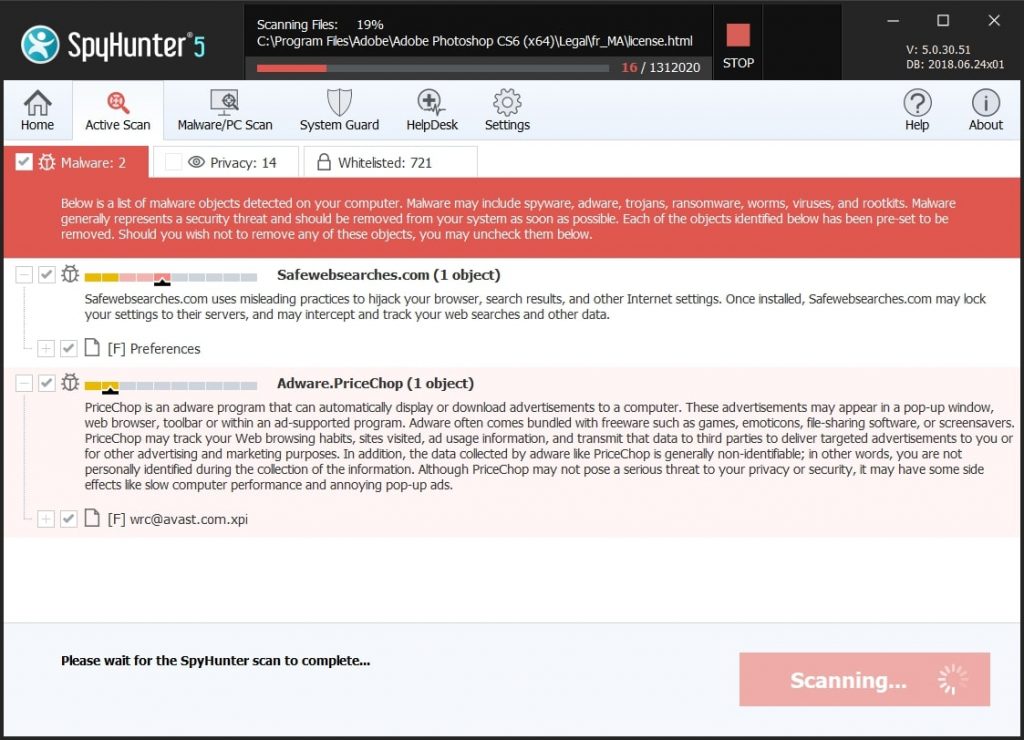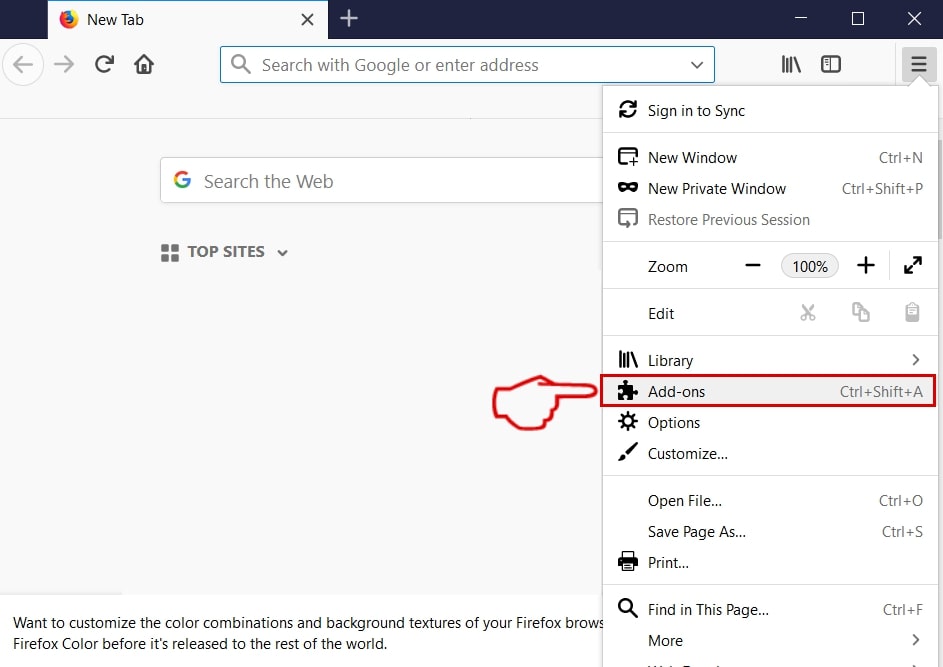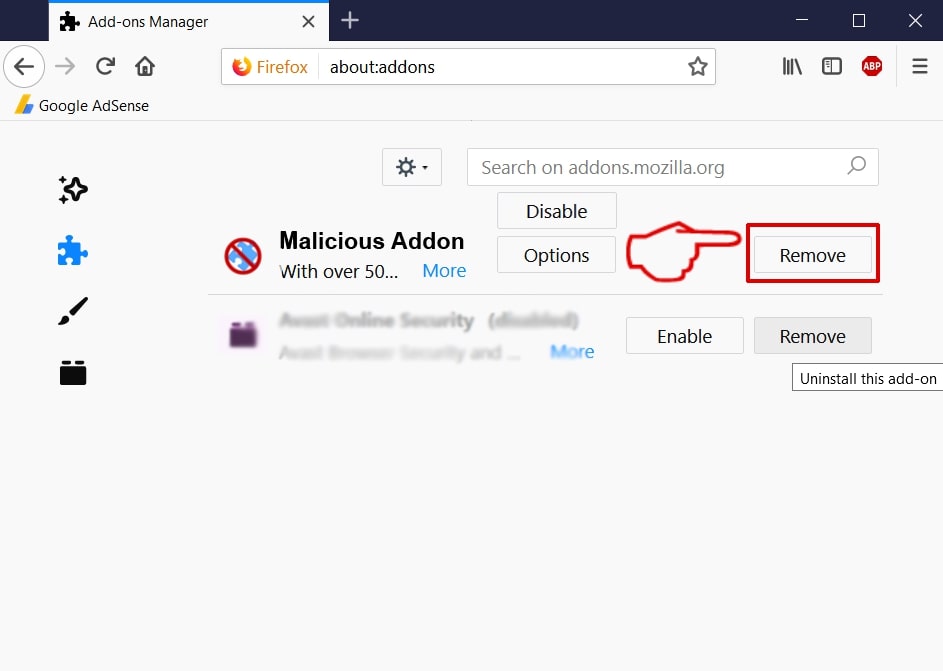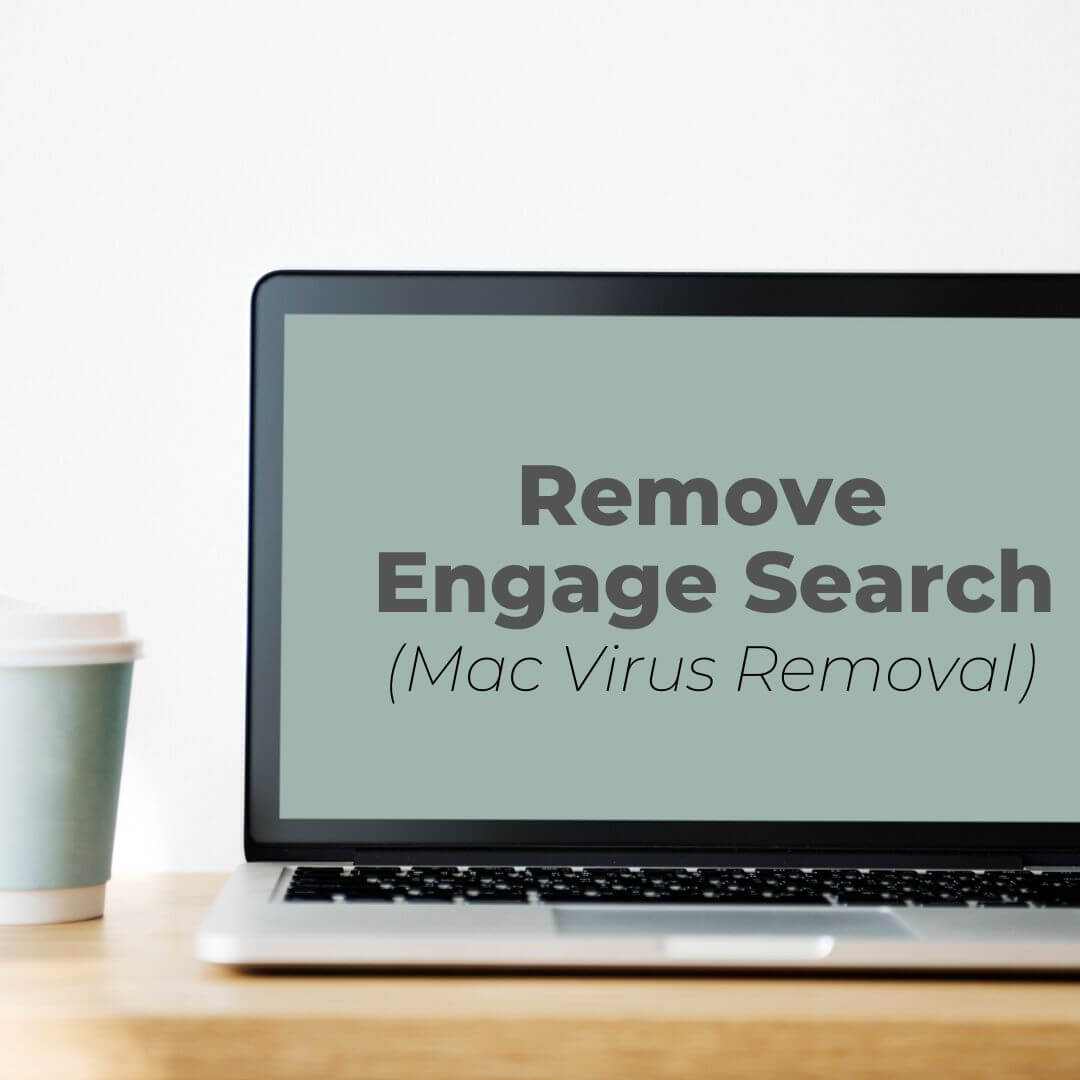If you are wondering why Engage Search keeps loading on your Mac and how to remove it, you should read this removal guide and follow all steps presented in it.
Engage Search
Engage Search is a suspicious program that has been detected to act like a typical browser hijacker. It affects popular web browsers without users’ permission. Potentially unwanted programs like Engage Search infect operating systems via shady spread techniques. That’s why users often skip noticing the moment of their installation. Hence, they consider them as computer viruses. The installation of a browser hijacker on a computer system (Mac, Windows) leads to noticeable changes in installed browsers.
Engage Search targets macOS primarily. After the unnoticed installation of this undesired program on your Mac, you may notice that the browser homepage, new tab page and search engine in your preferred web browser are altered. Additionally, the program will start collecting personally and non-personally identifiable details without your consent. When its operators receive the recorded data, they launch targeted advertising campaigns. As a result, your affected browser is forced to display lots of ads.
Be careful with all ads that appear in your affected browser. Visiting some of the sponsored websites hides the risk of an unnoticed infection with additional adware or even malware. For the sake of your online security and the security of your Mac, it’s best to consider the complete removal of Engage Search.

Threat Summary
| Name | Engage Search virus |
| Type | Browser Hijacker, PUP |
| Short Description | Performs browser modifications without your knowledge. Makes you a victim of unsolicited data collection and aggressive advertising.May pose danger to your Mac security. |
| Symptoms | The homepage, new tab page and search enigne in preferred web browser are set to display a hoax search engine or redirect you to bogus websites. |
| Distribution Method | Freeware Installations, Bundled Packages |
| Detection Tool |
See If Your System Has Been Affected by malware
Download
Malware Removal Tool
|
| User Experience | Join Our Forum to Discuss Engage Search virus. |
Engage Search – How Did It Appear? Is It Safe?
The suspicious program Engage Search pretends to be a reliable tool that improves your search experience. However, it is classified as a potentially unwanted program also a browser hijacker. As a typical hijacker, the unwanted app replaces the default search engine, homepage, and new tab page with a hoax search engine. To stay invisible on the affected system for longer, it may redirect all searches to well-known search engines like Bing and Yahoo.
According to latest information, Engage Search can present the following types of advertisements on your computer:
- Pop-ups
- Browser Redirects
- Banners.
- Ad-supported search results.
Even though it pretends to be a legitimate one it is yet another hoax search engine that aims to obtain search queries, browsing history, clicks on links and other details and send them to its operators.
This odd behavior of Engage Search potentially unwanted program is supported by variety of changes it applies without your permission and knowledge. As for the spread of such type of software, software bundles are the most preferred.
Unfortunately, there are many free apps like media players, readers, drivers, etc. that feature undesired extra apps like Engage Search in their installers. That’s why you should be very careful when download and install programs on your Mac. On the one hand, you should choose wisely the websites where you download apps from. On the other hand, you should read all the details listed in the installers of downloaded apps. To protect your Mac from unwanted programs like browser hijackers and adware you should install new apps with the help of the Advanced/Custom configuration options.
Once the Engage Search tricks you to run its files on the macOS, it becomes able to activate specific tracking technologies. Then it starts spying on certain details that can build a profile with your online interests. By providing the collected data to its owners, they become able to launch targeted advertising campaigns and flood your affected browser with lots of annoying ads.

How to Remove Engage Search from Mac
In order to remove Engage Search along with all associated files that enable its appearance in the browser, you should complete several removal steps. The browser hijacker removal guide below you will show you all steps that are needed for the complete removal of the annoying Engage Search hijacker. Follow them sequentially as they should be fulfilled in the presented order. If you don’t feel comfortable with the manual steps then you could navigate to the download process of an advanced anti-malware tool that will enable you to remove all harmful files with a few clicks.
In case you have further questions or need additional help with the removal process, don’t hesitate to leave a comment or contact us at our email.
Steps to Prepare Before Removal:
Before starting to follow the steps below, be advised that you should first do the following preparations:
- Backup your files in case the worst happens.
- Make sure to have a device with these instructions on standy.
- Arm yourself with patience.
- 1. Scan for Mac Malware
- 2. Uninstall Risky Apps
- 3. Clean Your Browsers
Step 1: Scan for and remove Engage Search virus files from your Mac
When you are facing problems on your Mac as a result of unwanted scripts and programs such as Engage Search virus, the recommended way of eliminating the threat is by using an anti-malware program. SpyHunter for Mac offers advanced security features along with other modules that will improve your Mac’s security and protect it in the future.

Quick and Easy Mac Malware Video Removal Guide
Bonus Step: How to Make Your Mac Run Faster?
Mac machines maintain probably the fastest operating system out there. Still, Macs do become slow and sluggish sometimes. The video guide below examines all of the possible problems that may lead to your Mac being slower than usual as well as all of the steps that can help you to speed up your Mac.
Step 2: Uninstall Engage Search virus and remove related files and objects
1. Hit the ⇧+⌘+U keys to open Utilities. Another way is to click on “Go” and then click “Utilities”, like the image below shows:

2. Find Activity Monitor and double-click it:

3. In the Activity Monitor look for any suspicious processes, belonging or related to Engage Search virus:


4. Click on the "Go" button again, but this time select Applications. Another way is with the ⇧+⌘+A buttons.
5. In the Applications menu, look for any suspicious app or an app with a name, similar or identical to Engage Search virus. If you find it, right-click on the app and select “Move to Trash”.

6. Select Accounts, after which click on the Login Items preference. Your Mac will then show you a list of items that start automatically when you log in. Look for any suspicious apps identical or similar to Engage Search virus. Check the app you want to stop from running automatically and then select on the Minus (“-“) icon to hide it.
7. Remove any leftover files that might be related to this threat manually by following the sub-steps below:
- Go to Finder.
- In the search bar type the name of the app that you want to remove.
- Above the search bar change the two drop down menus to “System Files” and “Are Included” so that you can see all of the files associated with the application you want to remove. Bear in mind that some of the files may not be related to the app so be very careful which files you delete.
- If all of the files are related, hold the ⌘+A buttons to select them and then drive them to “Trash”.
In case you cannot remove Engage Search virus via Step 1 above:
In case you cannot find the virus files and objects in your Applications or other places we have shown above, you can manually look for them in the Libraries of your Mac. But before doing this, please read the disclaimer below:
1. Click on "Go" and Then "Go to Folder" as shown underneath:

2. Type in "/Library/LauchAgents/" and click Ok:

3. Delete all of the virus files that have similar or the same name as Engage Search virus. If you believe there is no such file, do not delete anything.

You can repeat the same procedure with the following other Library directories:
→ ~/Library/LaunchAgents
/Library/LaunchDaemons
Tip: ~ is there on purpose, because it leads to more LaunchAgents.
Step 3: Remove Engage Search virus – related extensions from Safari / Chrome / Firefox









Engage Search virus-FAQ
What is Engage Search virus on your Mac?
The Engage Search virus threat is probably a potentially unwanted app. There is also a chance it could be related to Mac malware. If so, such apps tend to slow your Mac down significantly and display advertisements. They could also use cookies and other trackers to obtain browsing information from the installed web browsers on your Mac.
Can Macs Get Viruses?
Yes. As much as any other device, Apple computers do get malware. Apple devices may not be a frequent target by malware authors, but rest assured that almost all of the Apple devices can become infected with a threat.
What Types of Mac Threats Are There?
According to most malware researchers and cyber-security experts, the types of threats that can currently infect your Mac can be rogue antivirus programs, adware or hijackers (PUPs), Trojan horses, ransomware and crypto-miner malware.
What To Do If I Have a Mac Virus, Like Engage Search virus?
Do not panic! You can easily get rid of most Mac threats by firstly isolating them and then removing them. One recommended way to do that is by using a reputable malware removal software that can take care of the removal automatically for you.
There are many Mac anti-malware apps out there that you can choose from. SpyHunter for Mac is one of the reccomended Mac anti-malware apps, that can scan for free and detect any viruses. This saves time for manual removal that you would otherwise have to do.
How to Secure My Data from Engage Search virus?
With few simple actions. First and foremost, it is imperative that you follow these steps:
Step 1: Find a safe computer and connect it to another network, not the one that your Mac was infected in.
Step 2: Change all of your passwords, starting from your e-mail passwords.
Step 3: Enable two-factor authentication for protection of your important accounts.
Step 4: Call your bank to change your credit card details (secret code, etc.) if you have saved your credit card for online shopping or have done online activiites with your card.
Step 5: Make sure to call your ISP (Internet provider or carrier) and ask them to change your IP address.
Step 6: Change your Wi-Fi password.
Step 7: (Optional): Make sure to scan all of the devices connected to your network for viruses and repeat these steps for them if they are affected.
Step 8: Install anti-malware software with real-time protection on every device you have.
Step 9: Try not to download software from sites you know nothing about and stay away from low-reputation websites in general.
If you follow these reccomendations, your network and Apple devices will become significantly more safe against any threats or information invasive software and be virus free and protected in the future too.
More tips you can find on our MacOS Virus section, where you can also ask any questions and comment about your Mac problems.
About the Engage Search virus Research
The content we publish on SensorsTechForum.com, this Engage Search virus how-to removal guide included, is the outcome of extensive research, hard work and our team’s devotion to help you remove the specific macOS issue.
How did we conduct the research on Engage Search virus?
Please note that our research is based on an independent investigation. We are in contact with independent security researchers, thanks to which we receive daily updates on the latest malware definitions, including the various types of Mac threats, especially adware and potentially unwanted apps (PUAs).
Furthermore, the research behind the Engage Search virus threat is backed with VirusTotal.
To better understand the threat posed by Mac malware, please refer to the following articles which provide knowledgeable details.














